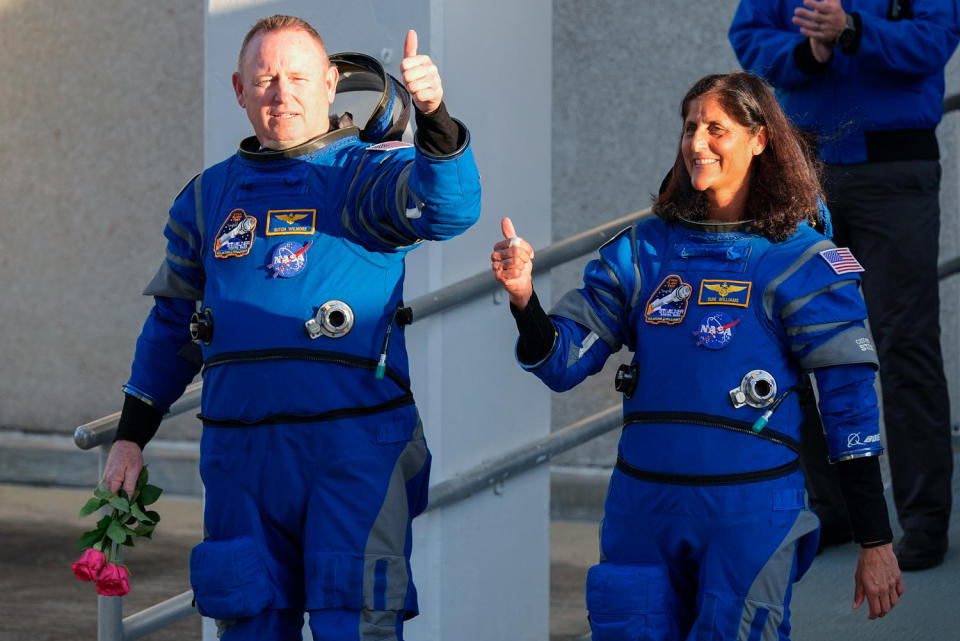Boeing is preparing for yet another attempt to launch NASA astronauts aboard its Starliner spacecraft.
It’s an important test flight – the first time a crew will take the vehicle to the International Space Station.
The launch was originally It isscheduled for May 6, but this attempt was canceled with about two hours left in the countdown. Liftoff is now scheduled for 12:25 pm ET on Saturday from Cape Canaveral Space Force Station in Florida. The spacecraft will enter orbit atop an Atlas V rocket built by United Launch Alliance, a joint venture between Boeing and Lockheed Martin.
The test flight aims to show that the Starliner can safely transport astronauts to and from the space station. If successful, NASA could authorize Boeing to make routine trips to the orbiting outpost, which would give it a long-awaited second option for SpaceX’s Crew Dragon capsule.
Boeing’s May 6 launch was canceled due to a problem with a valve on the Atlas V rocket. NASA astronauts Barry “Butch” Wilmore and Sunita Williams they were already seated and strapped into the capsule when mission controllers chose to duck down.
While work to fix the booster valve malfunction was underway, a separate problem – this time, a helium leak – was found in the propulsion system of the Starliner capsule, according to NASA. The discovery forced additional delays to a project that had already faced years of setbacks and budget overruns.
At a news conference last week, mission controllers said the rocket’s valve had been successfully replaced, but added that the helium leak would not be repaired until the next flight.
Steve Stich, manager of NASA’s Commercial Crew Program, said the slow leak has been extensively analyzed and has been determined to be unlikely to pose a threat to the crew, the mission or the spacecraft.
Repairing the leak would require a much longer delay because the spacecraft would need to be separated from the rocket, said Mark Nappi, Boeing vice president for the commercial crew program.
Stich called the problem a “design vulnerability,” because in the unlikely event that multiple systems failed while the helium leak persisted, it could leave the Starliner capsule without enough functional thrusters to perform crucial maneuvers, including deorbit burns to help the astronauts to return to Earth.
In the end, though, mission managers said they felt comfortable moving forward with Saturday’s test flight.
“We could deal with this particular leak if the leak rate increased up to 100 times,” Stich said.
Representatives from NASA, Boeing and United Launch Alliance met on Wednesday for a readiness review and officially voted to continue with launch preparations on Saturday.

Wilmore and Williams, who quarantined in Houston while engineers worked on the rocket and spacecraft, returned to NASA’s Kennedy Space Center in Florida on Tuesday.
If all goes according to plan, they will spend about a week on the International Space Station before returning to Earth and landing at the main Starliner landing site at White Sands Missile Range in New Mexico.
Boeing hopes to challenge the dominance of Elon Musk’s SpaceX, which carries NASA astronauts to and from the space station since 2020. Both companies developed their spacecraft as part of the Commercial Crew Program, which NASA established after revamping its space shuttle fleet, to provide incentives and help pay for the creation of commercially built vehicles capable of reaching low orbit. from the earth.
However, the Starliner program has hit many obstacles along the way.
In 2019, the the capsule’s unmanned debut flight was interrupted after software glitches prevented it from attempting to dock with the space station. Subsequent fuel valve problems caused several delays before Boeing could demonstrate in 2022 that the Starliner could dock with the ISS and return to Earth.
The company as a whole also faced stricter scrutiny after a The panel broke mid-flight on one of its 737 Max 9 planes.
This article was originally published in NBCNews. with









/cdn.vox-cdn.com/uploads/chorus_asset/file/25521507/notepadspellcheck2.jpeg?w=300&resize=300,300&ssl=1)



























